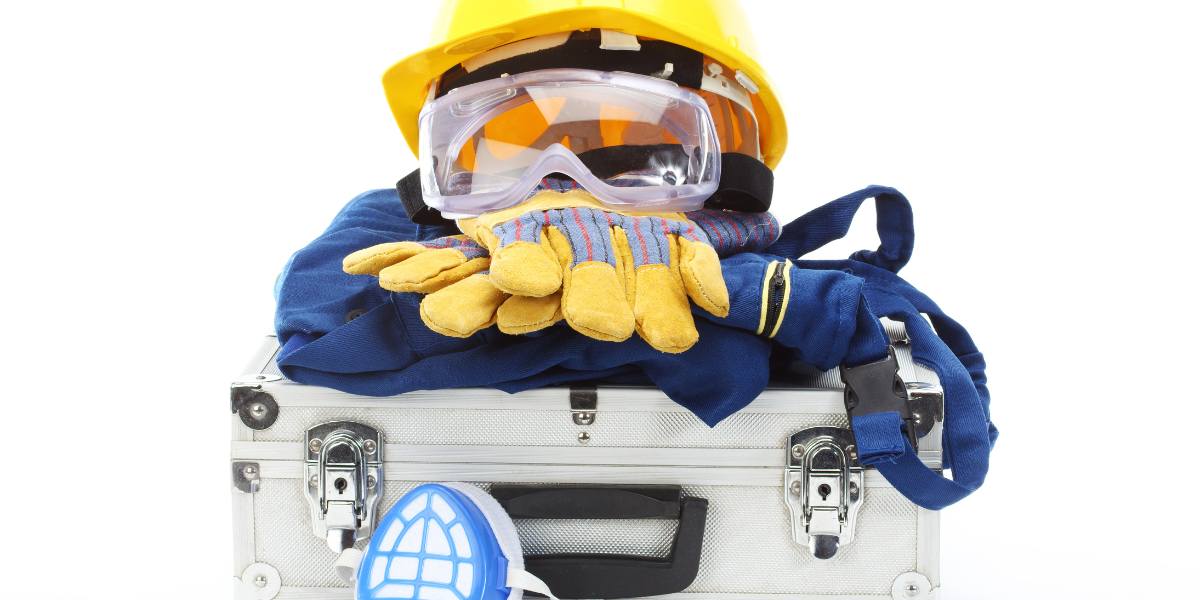Renting a dumpster is a convenient and effective way to manage waste for projects like home renovations, decluttering, or construction. But along with the convenience comes the responsibility to prioritize safety.
By following specific safety measures, you can avoid hazards, protect yourself and others, and keep your project running smoothly.
In this detailed guide what safety precautions should I take when renting a dumpster, we’ll walk you through the most important safety tips to ensure your dumpster rental is efficient and risk-free, covering everything from selecting the right size to handling hazardous materials and safe transportation.
Choosing the Right Dumpster Size: Avoid Overloading and Hazards
Selecting the right dumpster size is a critical decision. Overloading a dumpster can pose significant risks, such as debris spilling out, creating trip hazards, or damaging nearby property.
To prevent such issues, accurately estimating the amount of waste is essential. Choosing a dumpster that’s too small might lead to overfilling, which not only compromises safety but could also incur additional fees from the rental company.
For instance, a 15-yard dumpster is often ideal for small renovation projects, while a 20-yard dumpster may be better suited for larger jobs.
To get it right:
⦁ Consult with the rental company: Most companies have experts who can help assess your needs based on the type of project.
⦁ Visualize the debris: Think about the materials you’ll be discarding. Heavy debris like concrete or roofing materials will require a larger capacity than general household waste.
⦁ Plan for some buffer space: It’s better to have a little extra room than to risk overfilling the dumpster.
Overfilled dumpsters aren’t just safety risks – many municipalities enforce strict weight limits, and exceeding these can lead to hefty fines. So, it’s always best to plan ahead.
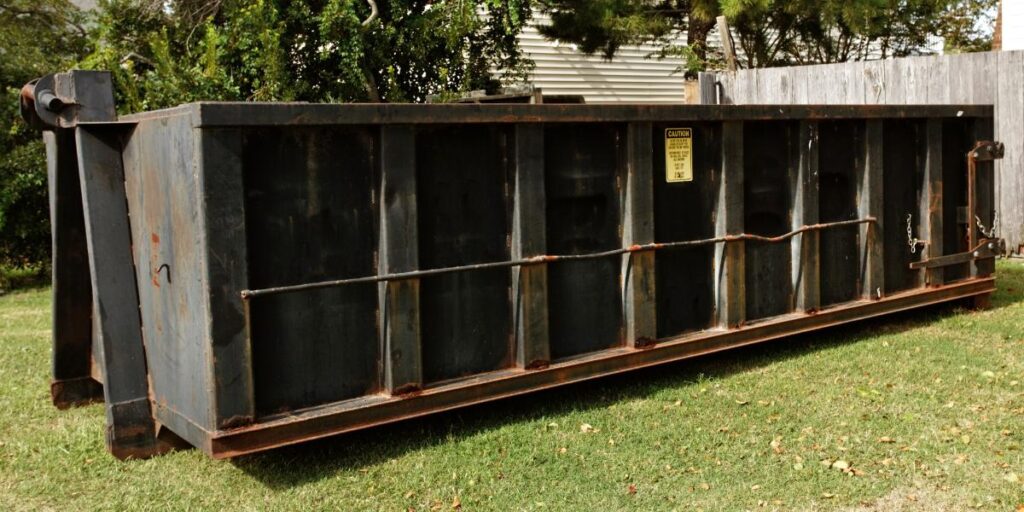
Proper Placement: Ensure Stability and Accessibility
A secure and strategic placement of your dumpster is critical for both safety and convenience. Dumpsters should be placed on flat, solid ground to prevent them from tipping over or shifting during use.
But that’s not all – you’ll want to ensure there’s enough clearance around the dumpster for safe movement, and that it’s not placed near any potential hazards like power lines or gas meters.
Here’s how to ensure safe placement:
⦁ Choose a stable surface: Ideal surfaces include paved driveways or gravel areas. Avoid soft ground, as dumpsters can sink or tip over.
⦁ Allow for easy access: Make sure there’s enough space for you or your team to walk around the dumpster comfortably without tripping over debris.
⦁ Mind landscaping and property: If you’re worried about damaging your lawn, place the dumpster on plywood to distribute the weight. Avoid areas where sprinklers or garden beds could be affected.
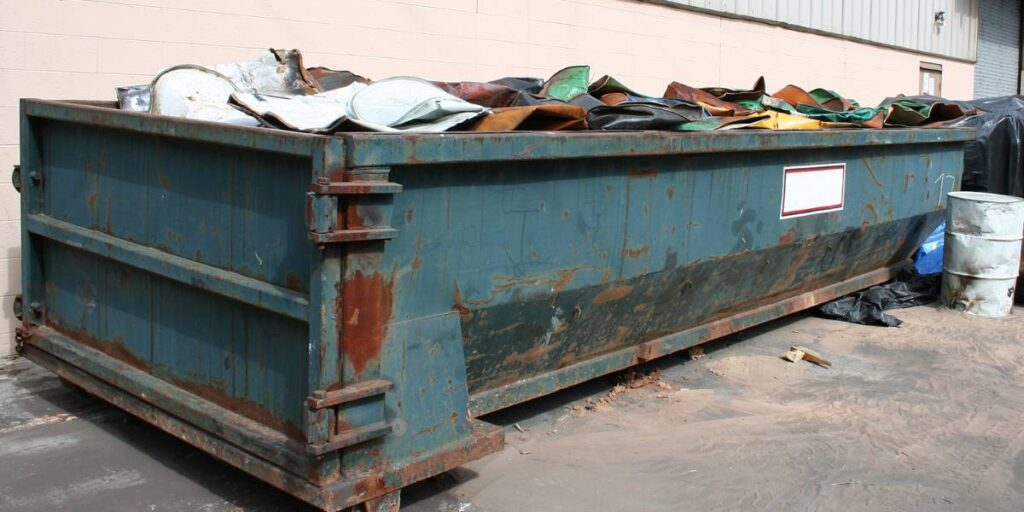
Loading the Dumpster Safely: Distribute Weight Evenly and Use Proper Techniques
How you load the dumpster is just as important as where you place it. Improper loading can lead to instability, causing the dumpster to tip or debris to fall out, creating significant safety hazards.
Always distribute the weight of the debris evenly inside the dumpster to keep it balanced.
Follow these loading tips:
⦁ Distribute the weight: Place heavier items on the bottom to create a stable base, and lighter items on top. Avoid stacking too high or over the sides.
⦁ Break down bulky items: Large items like furniture, appliances, or wooden planks should be broken down into smaller pieces whenever possible. This not only saves space but also makes the load safer and easier to manage.
⦁ Use equipment when necessary: For heavier items, use dollies, hand trucks, or even enlist help to prevent injuries from lifting. If lifting by hand, use proper techniques to lift heavy objects like bending at the knees and keeping your back straight.
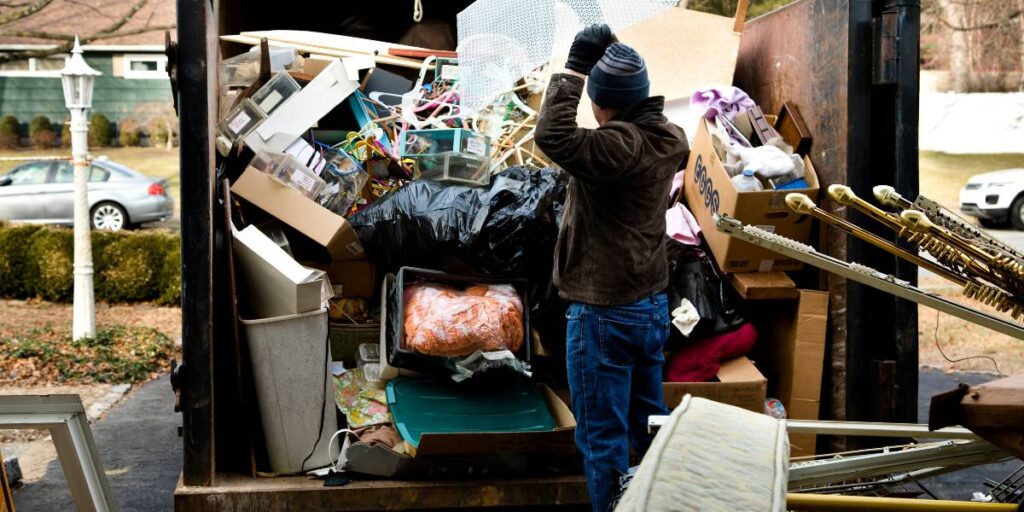
Avoiding Hazardous Materials: Protect Your Health and the Environment
Not everything can go into a dumpster, and understanding what’s prohibited is crucial for safety. Hazardous materials such as chemicals, paints, batteries, asbestos, and electronics require special handling and disposal.
Disposing of these in regular dumpsters can lead to serious health risks and environmental damage, and could violate local disposal laws.
Important steps to follow:
Know what’s restricted:
Always ask your dumpster rental provider for a list of prohibited materials. Common items that cannot be placed in dumpsters include:
⦁ Paints, solvents, and chemicals
⦁ Batteries and electronics (especially those containing lithium or lead)
⦁ Asbestos or contaminated construction materials
⦁ Tires and certain oils
⦁ Separate hazardous waste: If you’re handling items that require special disposal, mark them clearly and keep them separate from general waste until you can take them to a designated hazardous waste disposal site.
Some cities have special collection events for hazardous waste, so check with your local authorities for safe disposal options. For more information on this, refer to our guide on disposing hazardous materials.
Wearing the Right PPE: Equip Yourself for Safe Handling
Personal protective equipment (PPE) is essential when dealing with any kind of waste, particularly if you’re handling sharp, heavy, or potentially harmful materials.
Wearing the proper gear reduces the risk of injury and keeps you safe from unexpected dangers.
The right gear includes:
⦁ Heavy-duty gloves: These protect your hands from cuts, scrapes, and sharp objects hidden in debris.
⦁ Safety glasses: These prevent dust and debris from getting into your eyes, especially when dealing with materials like drywall, insulation, or glass.
⦁ Steel-toed boots: Protect your feet from heavy objects that could fall while loading or unloading the dumpster.
⦁ Dust masks: If you’re working with materials that produce a lot of dust, such as drywall or insulation, wearing a mask will protect your lungs.
⦁ Long sleeves and pants: These provide an extra layer of protection from scrapes, cuts, or exposure to harmful substances.
For a comprehensive approach to safety, check our junk removal services where we prioritize worker safety.
Keeping Children and Pets Away: Establish Boundaries
Dumpsters can seem fascinating to children and pets, but they’re full of sharp and hazardous materials, making them dangerous play areas.
To prevent accidents, set clear boundaries around the dumpster and ensure that children and pets are kept far away from the area.
Here’s how to keep the area secure:
⦁ Set physical boundaries: Use temporary fencing, caution tape, or cones to mark the area around the dumpster.
⦁ Supervise the area: If you have helpers or guests unfamiliar with safety protocols, make sure they understand the risks and follow the rules.
⦁ Communicate the dangers: Explain to children the risks of playing near dumpsters and establish a no-go zone around the work area.
Weather Precautions: Stay Safe in All Conditions
Weather plays a big role in dumpster safety. Working during rain, snow, or extreme heat can significantly increase the risk of accidents or heat-related illnesses.
It’s best to avoid working in hazardous conditions and take extra precautions when the weather is less than ideal.
Here are some weather safety tips:
⦁ Rain and snow: Wet surfaces can be slippery, so it’s best to postpone loading in these conditions. If you must work, wear non-slip shoes and proceed with caution.
⦁ Extreme heat: Protect yourself by staying hydrated, wearing light clothing, and scheduling breaks in shaded areas. Use sunscreen and hats to prevent heatstroke.
⦁ Windy conditions: Wind can blow debris around, creating hazards. If it’s particularly windy, wait until the weather calms down before continuing work.
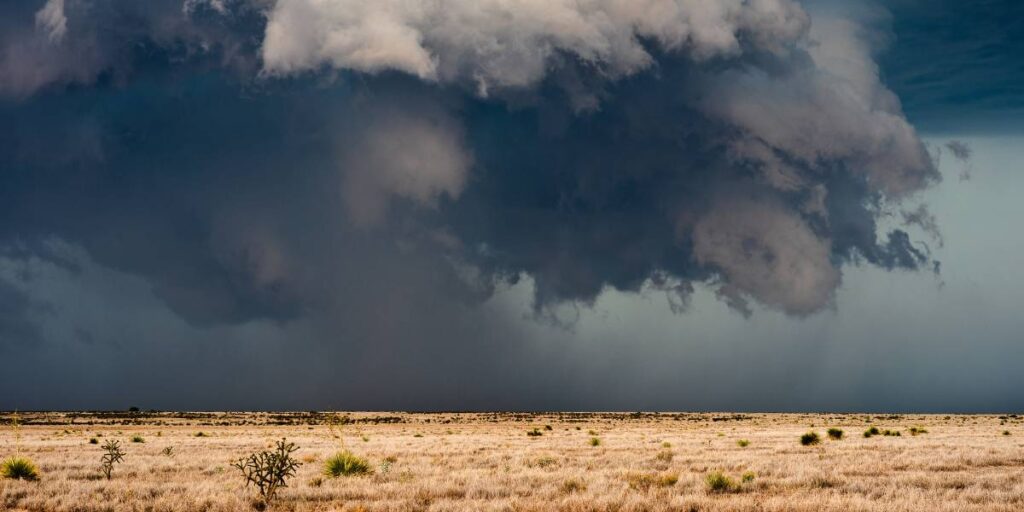
Safe Transportation: Ensure Secure Transit
Finally, ensure that the dumpster is transported safely. The rental company should employ experienced drivers who follow proper securing methods, such as using tie-downs or netting to keep the load stable during transit. Before the dumpster is picked up, verify that everything is properly secured and the route for transport is clear of obstacles.
Key transportation tips:
⦁ Check load stability: Ensure that no debris is sticking out or likely to fall during transport. The rental company should use straps, covers, or nets to secure the load.
⦁ Clear the route: Make sure the transport path is free of low-hanging branches, wires, or other obstructions that could hinder safe passage.
By taking these comprehensive safety measures, you’ll be well-equipped to handle your dumpster rental without any complications, ensuring a safe, smooth, and efficient project from start to finish.
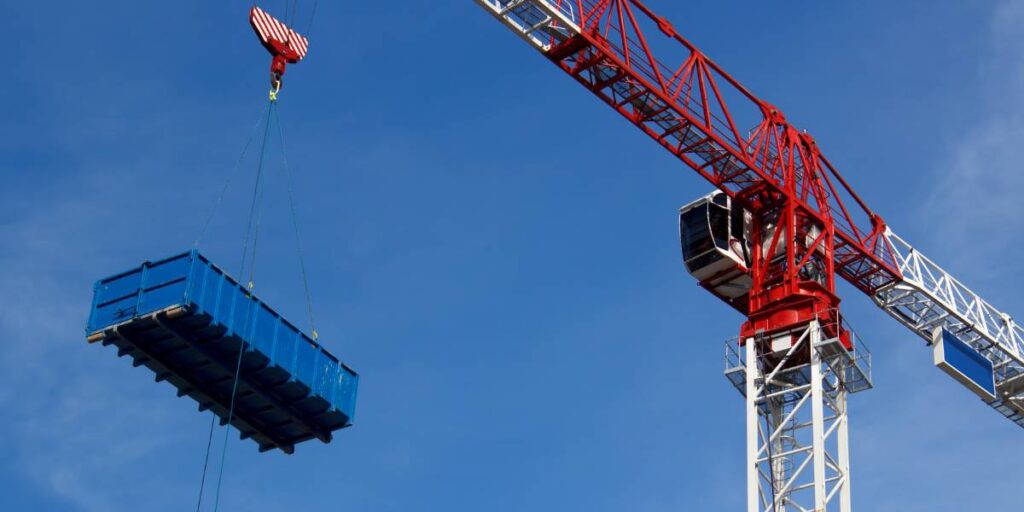
FAQs
What size dumpster should I rent for my project?
Choosing the right dumpster size depends on the volume and type of waste you expect to generate. Consider consulting with the rental company for expert guidance based on your specific project needs. It’s better to have a little extra space than to risk overfilling.
Can I place hazardous materials in a dumpster?
No, hazardous materials such as chemicals, batteries, paints, and certain electronics cannot be placed in a dumpster. These items require special handling and disposal methods. Always check with your rental company for a list of prohibited materials.
How should I prepare the area for dumpster placement?
Choose a flat, solid surface that is free of debris and away from power lines or other hazards. Make sure there’s enough clearance around the dumpster for safe access and movement. If you’re worried about damaging the lawn, consider using plywood to protect the grass.
What personal protective equipment (PPE) do I need when handling a dumpster?
Essential PPE includes heavy-duty gloves, safety glasses, steel-toed boots, dust masks (if necessary), and long sleeves and pants to protect against injuries and exposure to harmful materials.
How can I keep children and pets safe around the dumpster?
Establish a clear boundary around the dumpster area and supervise children and pets to ensure they stay away. Using temporary fencing or caution tape can help keep them at a safe distance.
What should I do in bad weather?
If conditions are wet or slippery, it’s best to postpone loading the dumpster. In hot weather, take breaks, stay hydrated, and use sun protection to avoid heat-related illnesses. Always prioritize safety and avoid working during extreme weather conditions.
How do I ensure the safe transportation of the dumpster?
Confirm that the rental company uses experienced drivers and that the load is securely tied down before transport. Check that the route is free of obstacles to ensure a safe journey.
Conclusion
Renting a dumpster can be a highly effective solution for managing waste during home improvement projects, cleanouts, or construction work.
Knowing how to manage hazardous materials and wearing the right personal protective equipment (PPE) are essential for a safe dumpster rental experience.
Additionally, setting boundaries to protect children and pets, as well as staying aware of weather conditions, play a key role in maintaining a safe and efficient environment.
Establishing boundaries to keep children and pets safe and being mindful of weather conditions further contribute to an efficient and hazard-free environment.
Ultimately, prioritizing these safety measures not only protects you and those around you but also ensures a smooth workflow throughout your project.
With the right precautions in place, you can focus on completing your project effectively, knowing that safety is a top priority.
